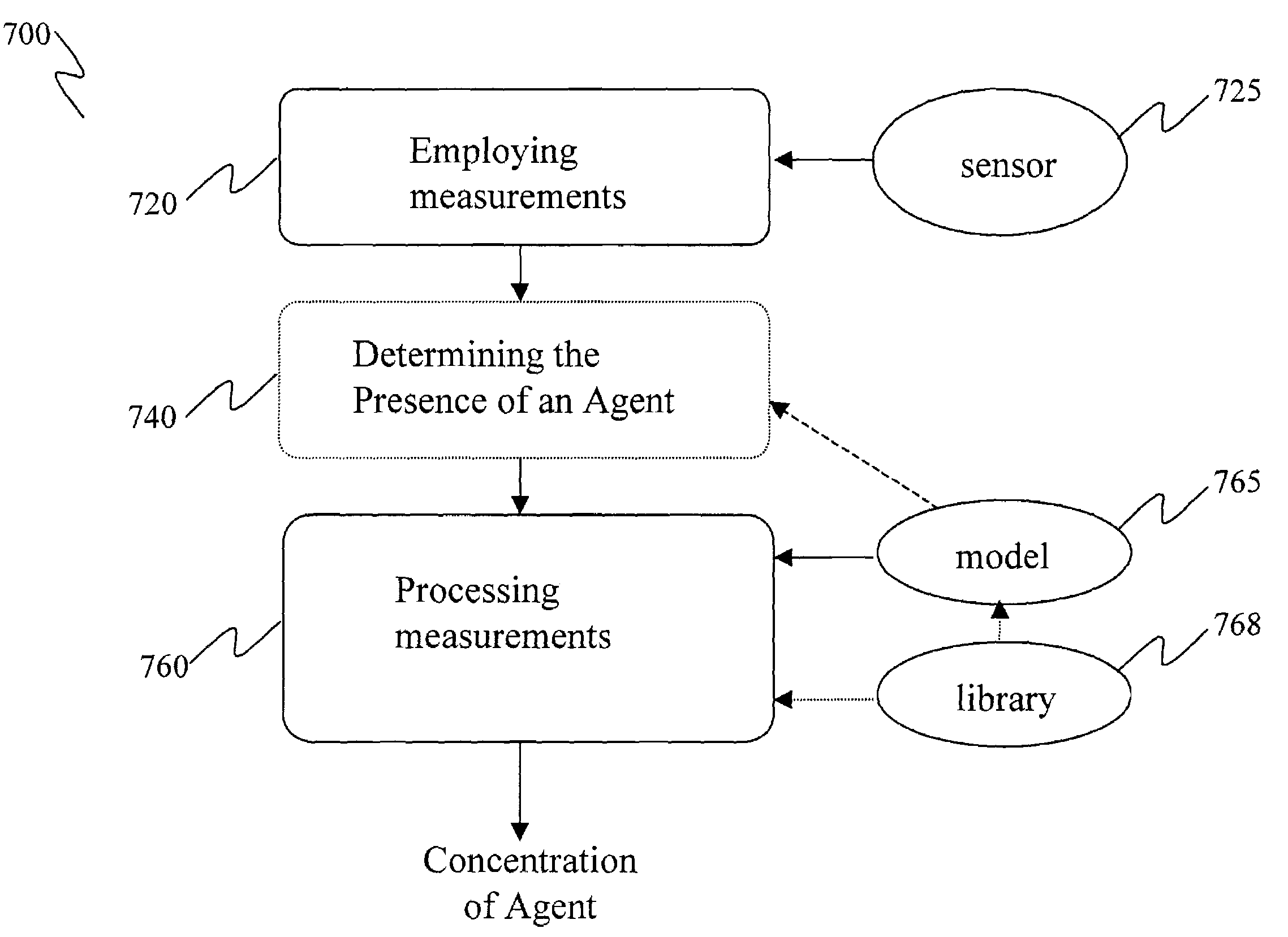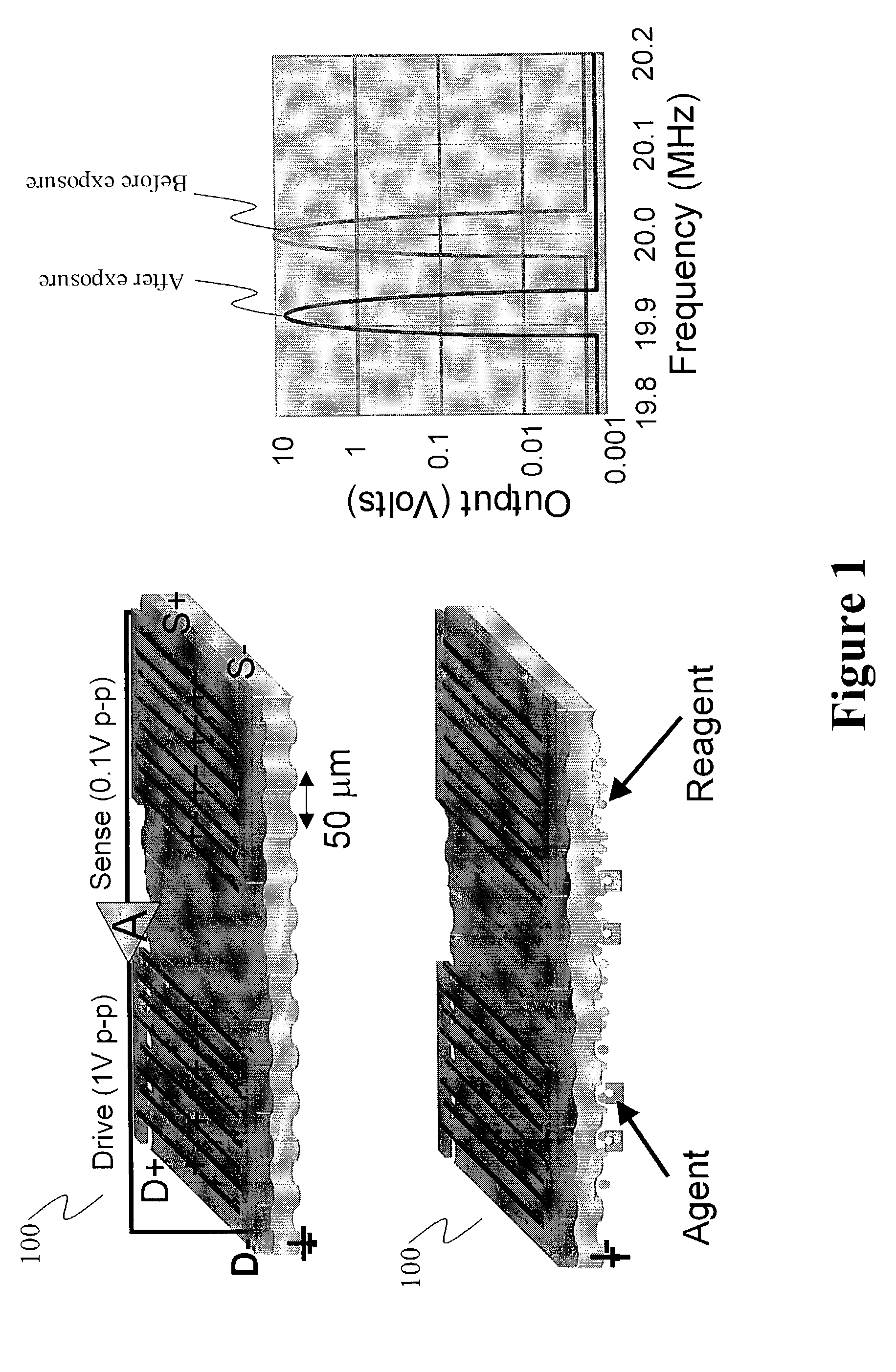Method and apparatus for analyzing spatial and temporal processes of interaction
a technology of interaction and process, applied in the field of chemical or biological agent detection, can solve the problems of time-consuming experiments, difficult to efficiently store the information derived from these experiments, and hampered selection of appropriate arrays, so as to minimize error variance, optimize the speed and repeatability of determining, the effect of simplifying the determination
- Summary
- Abstract
- Description
- Claims
- Application Information
AI Technical Summary
Benefits of technology
Problems solved by technology
Method used
Image
Examples
Embodiment Construction
[0036]Embodiments of various aspects of the invention are described below. Other embodiments incorporating the concepts disclosed herein are within the spirit and scope of the invention. The described embodiments are to be considered in all respects as only illustrative and not restrictive.
[0037]FIG. 1 depicts a sensor 100 that may be used in conjunction with, or incorporated into, the present invention. In particular, FIG. 1 depicts a flexural plate wave (FPW) sensor 100 in which the flexural plate is made of Silicon and coated with thin film piezoelectric drive and sense comb fingers on one surface. The drive comb fingers drive the plate with a sinusoidal voltage. The sense comb fingers sense the vibration frequency of the plate. An electronic circuit locks on to the resonant frequency. The opposite surface of the Silicon flexural plate is coated with a reagent. When the reagent absorbs an agent that is present in the environment, the mass of the flexural plate increases causing a...
PUM
| Property | Measurement | Unit |
|---|---|---|
| concentration | aaaaa | aaaaa |
| vibration frequency | aaaaa | aaaaa |
| time-varying | aaaaa | aaaaa |
Abstract
Description
Claims
Application Information
 Login to View More
Login to View More - R&D
- Intellectual Property
- Life Sciences
- Materials
- Tech Scout
- Unparalleled Data Quality
- Higher Quality Content
- 60% Fewer Hallucinations
Browse by: Latest US Patents, China's latest patents, Technical Efficacy Thesaurus, Application Domain, Technology Topic, Popular Technical Reports.
© 2025 PatSnap. All rights reserved.Legal|Privacy policy|Modern Slavery Act Transparency Statement|Sitemap|About US| Contact US: help@patsnap.com



